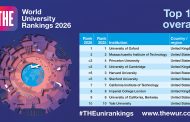By Dr Yusuf Bangura
We enjoyed a very educative, guided tour of one of Kenya’s flourishing flower growing and processing farms in Naivasha during a recent trip there. This is a huge farm area, with seven companies sharing basic infrastructure, such as boreholes, reservoir, electricity supply, sorting and packaging room, transportation, and fertigation facilities.
Kenya’s floriculture is the biggest in Africa and the third biggest globally. It employs more than 200,000 people, impacts the livelihoods of about two million people, and accounts for about 1.5% of the country’s GDP.
Dutch businessmen dominate the industry. A few Kenyans—mainly famous ex-politicians—also own flower businesses.
There are about 220 flower farms in Kenya, 70 percent of which are located at Naivasha. Naivasha’s moderate temperature, high elevation (which minimises the presence of pests), good rainfall, and fresh water make it ideal for flower farming.
The flowers are grown under greenhouse conditions. The process requires a high level of capital investment and is heavily time-sensitive and labour-intensive. A large number of women are involved in the growing, picking, sorting and packaging parts of the business.
Here are a few interesting things we learned:
- The plants can only produce flowers when a male stem is paired with a female stem. The male stem is planted at the bottom of the soil and the female stem is clipped onto the male stem for fertilisation. The female stem produces the flowers.
- Fertilisers approved by Fair Trade, which we were told follows WHO standards, must be used to have access to European markets. These are graded on a scale of 1-4, with 4 being the most toxic, which is prohibited.
- Every day a team of scouts checks each plant to ensure that it is free of pests. Treatment is provided based on the reports of the scouts.
- Output varies according to peak and low periods, with Valentine’s Day and Mother’s Day periods as the peak. Production can be increased during peak periods by checking for what is called ´true leaves’ ( a branch with five or more leaves) and cutting the stem at that level before planting.
- The Picking of flowers is delicate and laborious and requires a lot of care. It is done manually by women. The flowers are put in baskets that hold up to 100 stems and loaded into delivery trucks for transportation to a cold room.
- The flowers are then checked and processed by women before they are pakaged—one stem at a time.
- The processed flowers are sent to another cold room for collection by trucks, which take them to Nairobi. The trucks are fitted with cold rooms.
- We were told that it takes about an hour after arrival in Nairobi for the flowers to be put in a cargo plane for the export to Amsterdam.
- All flowers that are sold in Europe go through Amsterdam.
- The flowers should be in supermarkets within 48 hours after harvesting.
- A special room (under conditions of room temperature ) keeps samples of exported flowers to check how long it takes for the flowers to wither.
- Flower growing requires a lot of water. The farms have boreholes, which pump water to a reservoir for treatment (desalination) before the water is supplied to the farms.
- The seedlings are bred in Amsterdam and sent to Kenya for propagation and use. The breeders in Amsterdam engineer the colours of the flowers. We were told that new colours can take up to 20 years to develop.
- A BLACK Rose is currently being developed and could be in the market by next year!



























